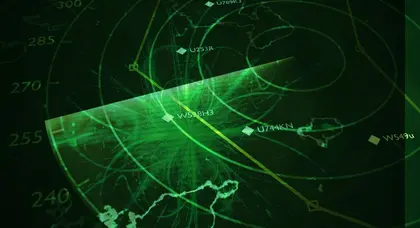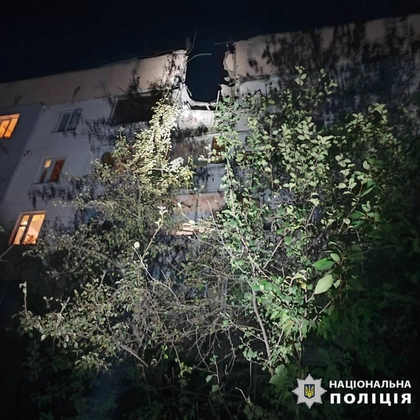With Kyiv’s air defense stockpile running low and military aid from the US stalling, its Pokrova electronic warfare (EW) system might be able to provide temporary relief.
By spoofing – instead of jamming – the satellite signals received by Russian aerial threats, the system could reportedly feed false positions to unmanned aerial vehicles (UAVs) and missiles and lead them astray, preventing them from reaching their targets – though threats of damaging unintended targets remain.
JOIN US ON TELEGRAM
Follow our coverage of the war on the @Kyivpost_official.
Even though information on the system remains classified, here’s what we do know about its functionalities and potential deployments.
What is Pokrova?
Pokrova is an EW system developed by Ukraine to counter aerial threats whose namesake symbolizes a protective veil over Ukraine.
The name “Pokrova” refers to the Feast of the Protection, a religious celebration in Ukraine that could be traced to a 10th-century legend, where it is said that an apparition of the Virgin Mary spread her veil over a church in Constantinople (now Istanbul) and led to the withdrawal of besieging troops.
The existence of Pokrova was first confirmed by Ukraine’s former Commander-in-Chief, Valery Zaluzhny, in his military essay on the current war published by The Economist in November 2023.
However, information on Pokrova remains scarce, and it is not known in what form or shape it resembles, nor how the system is being deployed, be it vehicle-mounted or stationary.

Over 100 Ukrainian Drones Target Russian Regions, Strike Russia's Largest Explosives Plant
Before we dive into how Pokrova works, it is important to understand the difference between jamming and spoofing.
Jamming vs spoofing
Pokrova works by spoofing, not by jamming.
In layman's terms, jamming functions by creating overwhelming signals that interfere with the communication between the satellites and onboard receivers, while spoofing aims to recreate false signals that confuse the receiver.
In other words, jamming means the weapon would not receive external signals, while spoofing means it would receive signals that indicate a wrong location.
Shahed drones, as well as some aerial weaponry, fly to their targets using a combination of satellite navigation units (GPS or similar variants) and inertial navigation systems (INS), where the latter uses accelerometers and initial position tocompute data such as velocity and orientation to correct the route of flight.
In such navigation systems, the internal INS, satellite positional information and sometimes other externally based update methods all work in an overarching system to arrive at route corrections and guidance to its destination.
In short, the INS determines the movement and can work as a backup if the GPS fails, but the GPS data provides an accurate external reference of where it is and dictates where it will go.
As such, the INS, without external reference, could accumulate errors over time and drift from its course – in the case of Shaheds, the error translates to approximately 5 km of deviation per 100 km traveled – statistics indicating very low-quality INS equipment, according to Kyiv Post staff familiar with aviation navigation devices.
As Shaheds are equipped with relatively small warheads that contain up to 50 kg of explosives, they would need to be in close proximity to their intended targets to be effective.
The Russian-made Kometa-M adaptive antenna onboard most drones and missiles has exceptional anti-jamming capabilities, a technology Russia began to develop before the invasion of Ukraine in 2014, but Ukraine said it had discovered a workaround.
“We already have the ability to counter this system,” said Ivan Pavlenko, the Chief of the Main Directorate of Electronic Warfare and Cyber Security of the Ukrainian General Staff in September 2023.
How does Pokrova work?
It is believed that Ukraine “spoofs” the aerial threats by feeding them false positional data that are subtly different from its actual coordinates, meaning the onboard system might not understand that it was being “spoofed.”
The deviations would ultimately accumulate over time, and the weapon would miss its target as a result.
In theory, Pokrova could be effective on drones and missiles that rely on satellite navigation, but the results are more nuanced.
While loitering munitions like Shaheds utilize relatively primitive forms of navigation systems, high-end missiles costing millions of dollars in Russian arsenals use complex systems with redundant measures such as terrain contour matching (TERCOM) and digital scene matching area correlator (DSMAC), which would analyze the terrain during flights and potentially negate the errors in positional data.
Deployments in Ukraine
According to Zaluzhny, Pokrova has been deployed across Ukraine.
“To date, the capabilities to counter enemy high-precision weapons (guided missiles, UAVs) are being increased by deploying the ‘Pokrova’ nationwide EW system with the possibility of replacing the satellite radio navigation field (‘spoofing’), suppressing satellite radio navigation along the entire line of contact and in most parts of Ukraine,” wrote Zaluzhny in his essay.
While the Armed Forces of Ukraine (AFU) do not disclose details on Pokrova deployments, some incidents might have indicated the use of Pokrova in bringing down drones and missiles.
On Feb. 3, the Ukrainian Air Force said 11 drones were destroyed and 7 more “missed their targets and were lost to location,” which is a significant number compared to the regular 4 percent failure rate based on “confirmed data from the Russia side” reported by Kyiv Post earlier.
On Jan. 18, the Ukrainian Air Force reported a similar incident where “EW devices [were] involved in repelling an air attack” and “a few more drones did not reach their goals” on top of the 22 drones destroyed.
As for missiles, another report on Jan. 13 claimed that “more than 20” of the recorded launches “did not achieve their goals as a result of active countermeasures by means of electronic warfare,” indicating a potential use of Pokrova or similar EW systems.
The use of EW systems in countering aerial threats has not been frequently published by officials, but the confirmed existence of Pokrova, and its potential deployments, might just be able to provide Ukrainians with some form of assurance amidst the uncertain supplies of Western aid to help Kyiv defend itself.
Updated Information from the Ukrainian Air Force on Feb. 13:
The Ukrainian Air Force has revealed, following information published in Forbes that it has been successfully operating the homegrown Pokrova anti-drone system that functions across the airspace of the country, functioning as a protective umbrella.
Pokrova works by spoofing, or telling subtle lies to the drone so it never suspects it is being misled.
Col, Yurii Ihnat, spokesperson for the Air Force, revealed the information publicly on Feb. 13, according to Militarnyi, the website of the Defense Industry of Ukraine.
Ihnat confirmed the operation and successful use of the Pokrova integrated electronic warfare system capable of intercepting Russian strike drones.
“Pokrova exists and is being used. There are others that work. Electronic warfare systems work against all enemy air attack means,” Ihnat said, implying the systems are in place not just to counter loitering Shaheds but other airborne threats.
According to the Defense Industry of Ukraine: “The Pokrova system uses spoofing technology that replaces satellite signals and thus misleads drone navigation devices. Having diverted from the route, they fly past the target or crash unharmed.”c
Russian-launched Shahed-136s began to be found on the ground without any signs of damage at the end of January this year.
You can also highlight the text and press Ctrl + Enter






